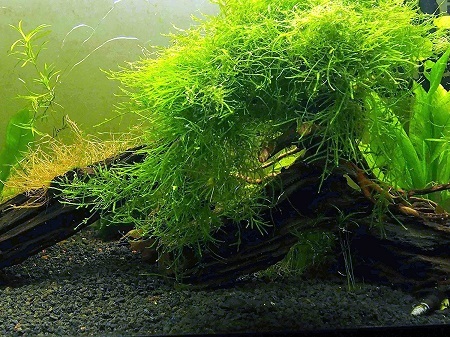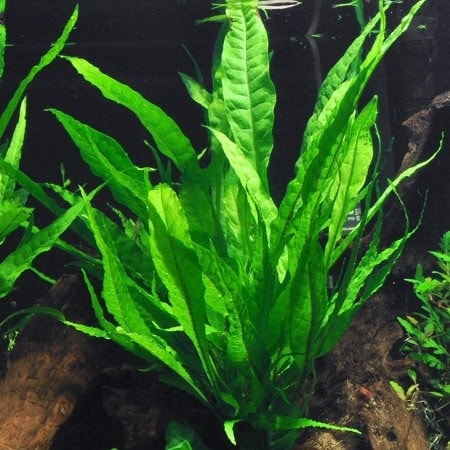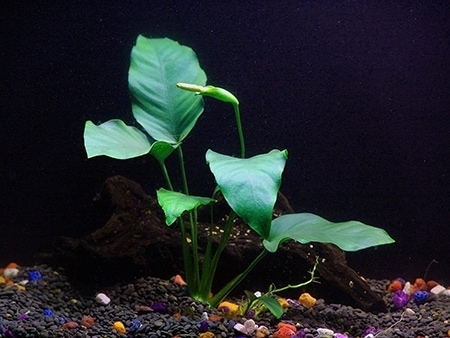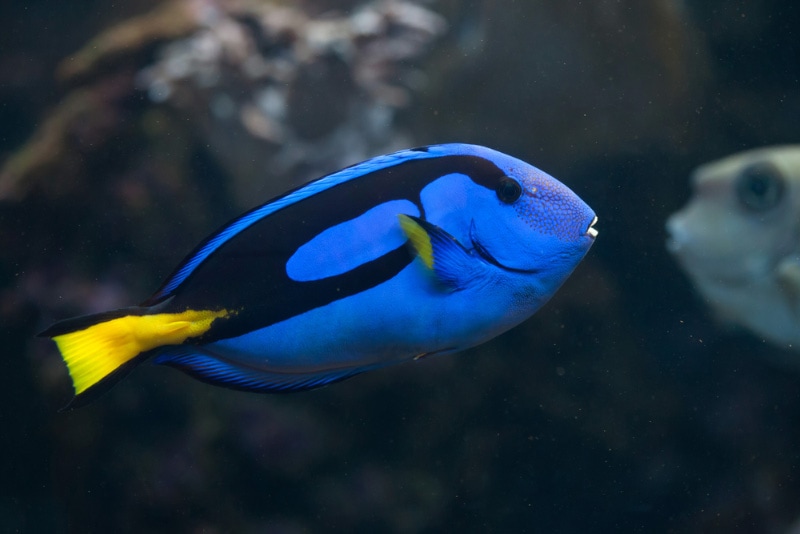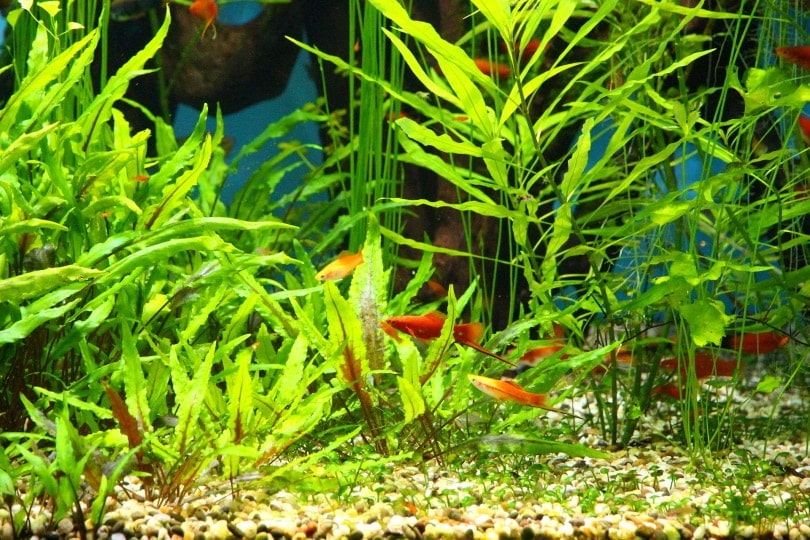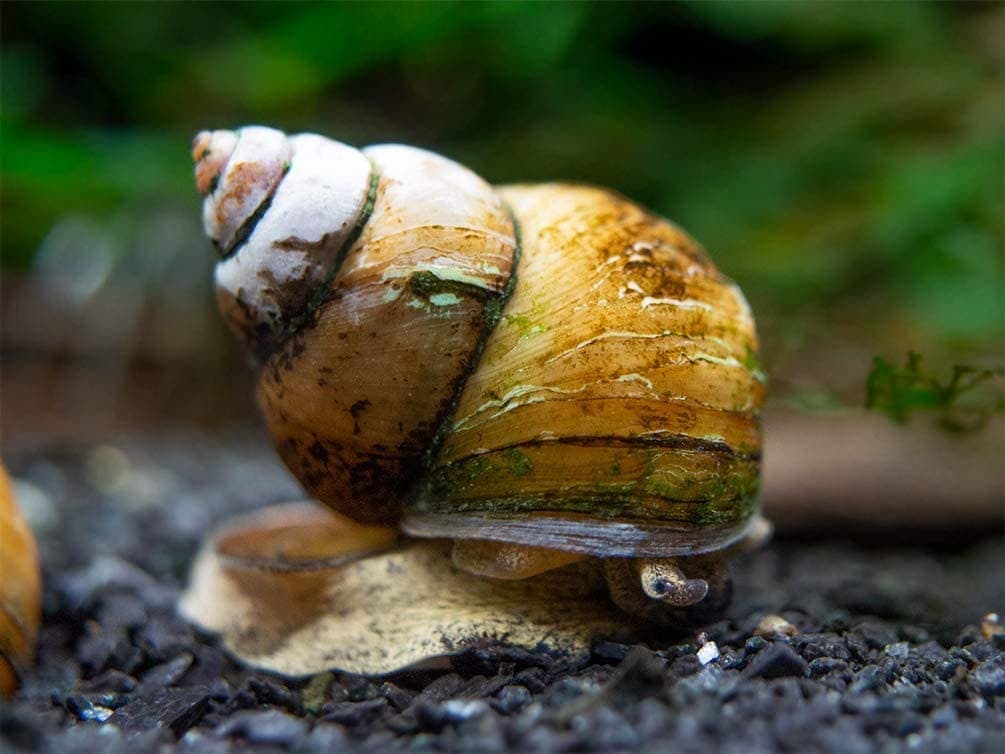8 Best Aquarium Plants That Don’t Need Substrate – 2024 Reviews & Top Picks

Updated on
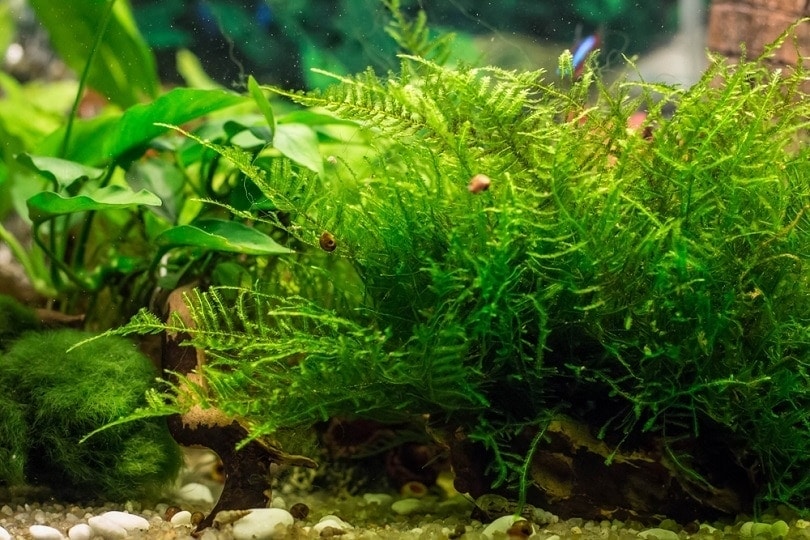
If you are a budding aquarist, it may be better for you to start with plants that do not require a lot of effort or installations to thrive. Aquarium plants that do not require substrate to grow are an excellent option for beginners.
In addition to growing freely, most of these plants are exceptionally hardy, flourishing in all kinds of conditions. What’s more, they act as natural water purifiers because they remove nitrates and other compounds from the water.
But not all plants cut it. The following are reviews of eight of the best aquarium plants that do not need substrate.
A Quick Comparison of Our Favorites of 2024
| Rating | Image | Product | Details | |
|---|---|---|---|---|
| Best Overall |

|
Java Moss |
|
Check Price |
| Best Value |
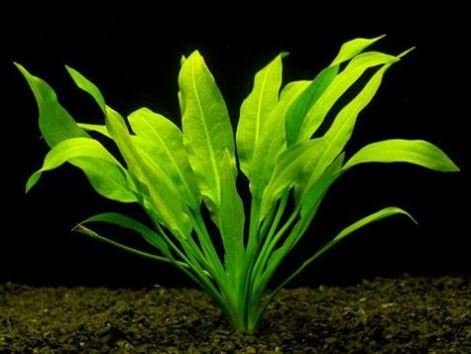
|
Amazon Sword |
|
Check Price |
| Premium Choice |

|
Java Fern |
|
Check Price |

|
Vallisneria Species |
|
Check Price | |

|
Amazon Frogbit |
|
Check Price |
The 8 Best Aquarium Plants that Do Not Need Substrate
1. Java Moss
- Growth rate: Moderate
- Max height: 4 inches
- Light demands: Low
- CO2: Low
- Difficulty: Easy
The Java Moss is a staple in aquariums worldwide, owing to its hardy nature. What’s more, it is incredibly beautiful, making it a good choice for a decoration aquarium plant.
You can choose to either leave the Java Moss floating or tie it to driftwood and rocks. If you want to indulge your creative side, cover coconut hides with the moss to have floating moss balls. Alternatively, you can attach the Java Moss to a mesh plate to create a plush wall.
When it comes to light requirements, the Java Moss is incredibly undemanding and is capable of thriving in low light setups. It also does well in a wide range of water conditions and temperatures. This is among the few aquatic plants that can survive in brackish water.
But remember to trim it when it starts getting thick. This will ensure that the lower areas remain green and healthy.
- Hardy
- Easy to set up
- Provides nice hiding spots
- Easy to take care of
- Traps debris
2. Amazon Sword
- Growth rate: Moderate
- Max height: 24 inches
- Light demands: Moderate
- CO2: Low
- Difficulty: Easy
The Amazon Sword will do well even in low light and is a good choice for people with larger tanks. But this plant is a root feeder, meaning that it will require some extra root fertilizer for it to thrive. Fortunately, simple root tabs should do the trick.
Under the right conditions, this plant has been known to reach sizes of up to 24 inches. This makes it one of the best plants to use if you want to make your aquarium stand out. Additionally, most fish love the Amazon Sword’s long and slender leaves for the cover that they provide, with some seeing them as an ideal foraging spot.
Owing to its large size, the Amazon Sword must absorb large amounts of nutrients and byproducts, making it an excellent water purifier.
Experts recommend allowing this plant to grow above the surface of the water, which will allow the plant to develop flowers.
The only issue with this plant is that it can take a considerable amount of time to attain full size.
- Excellent for larger tanks
- Provides good hiding and foraging sports
- Can sprout flowers
- Its relatively slow rate of growth makes it susceptible to algae growth
3. Java Fern
- Growth rate: Slow
- Max height: 12 inches
- Light demands: Low
- CO2: Low
- Difficulty: Easy
The Java Fern is another favorite among aquarists. However, this plant requires you to have patience, as it can take some time to get going. Fortunately, once it does, it doesn’t seem to stop.
Another great thing about this plant is its hardiness. In addition to being able to survive just about any type of environment, it comes with tough leathery leaves that are incredibly unpopular among plant-eaters. This makes it an excellent plant for aquariums with herbivorous fish.
The Java Fern is also not fussy about water values or lighting, making it ideal for low-tech tanks. Beginners should have no trouble taking care of this fern as long as they plant it correctly. For proper growth, you will need to tie the Java Fern to driftwood or rocks.
The Java Fern comes in different varieties, with each having a unique leaf shape and growth patterns.
- Resilient
- Tough leaves
- Easy to care for
- Variety
- Slow rate of growth
4. Vallisneria Species
- Growth rate: Slow
- Max height: 30 inches
- Light demands: Low
- CO2: Low
- Difficulty: Easy
The Vallisneria comes in a group of subspecies with different traits to allow you to find one that is most suitable for your tank. The good thing is that the plant adapts easily to a wide range of light, water, and environmental conditions.
While the Vallisneria takes its time to mature, it develops runners around the parent plant rather quickly. These runners come with tiny leaves. If you do not remove the runners, this plant will form a dense bush within no time. This makes Vallisneria a good choice for fish that love plenty of cover.
Nonetheless, it might not be a good option for tanks containing herbivorous fish because its soft leaves make a great snack for such species.
Experts recommend the Vallisneria to people who keep shy fish, such as dwarf puffers and bettas.
- Forms a dense bush to provide a safe space for shy fish
- Comes in a variety of subspecies
- Resilient
- Takes time to grow
- Can be fed on by herbivorous fish
5. Amazon Frogbit
- Growth rate: Fast
- Max height: 20 inches
- Light demands: Low
- CO2: Low
- Difficulty: Easy
The Amazon Frogbit is an excellent choice for those looking for a tough and fast-growing plant. It is a floating species, making it an ideal fit for fish that appreciate some shade or cover. But what is more alluring about it is its easy-going nature. You’ll have no trouble taking care of it.
As mentioned, this plant is a fast grower, capable of thriving in less than ideal conditions. In fact, it makes the water safer for your fish by keeping the parameters stable. It absorbs phosphates and nitrates from the water, both of which are compounds that have been found to harm aquatic fauna when in high concentrations. Additionally, the Frogbit’s long roots allow shy and skittish fish to find a place to hide.
This plant, however, does not do well under harsh lighting. It also does not enjoy being submerged for extended periods.
- Fast-growing
- Ideal for those looking for floating plants
- Helps maintain water purity by absorbing nitrates and phosphates
- Does not do well underwater
6. Anubias
- Growth rate: Moderate
- Max height: 8 inches
- Light demands: Low
- CO2: Low
- Difficulty: Easy
The Anubias is another great aquatic plant that does not need to grow in substrate. Other reasons that make this plant a good choice for most aquariums is the fact that it does well in low light conditions. Also, it does not make good food for herbivorous fish and will therefore not be touched.
Anubias grows best when it is tied to driftwood or rocks. You can enhance the plant’s look by growing it in multiple groups. This not only enhances the aquarium’s aesthetics but also provides the fish with a place to rest or sleep.
However, you must keep trimming the Anubias to prevent unruly growth. This plant also sprouts flowers if you allow it to grow above the water.
- Is not fed on by herbivorous fish
- Aesthetically pleasing
- Provides a resting place for fish
- Rather pricey
7. Cryptocoryne Species
- Growth rate: Moderate
- Max height: 12 inches
- Light demands: Low
- CO2: Low
- Difficulty: Easy
Simply known as crypts, these aquatic plants thrive in low light conditions, growing gradually to form a huge bush. This makes them an excellent fit for shy fish because they provide excellent cover. Crypts come in many varieties, with varying sizes and colorations.
Upon buying one of these plants, you might think that they are dying when their leaves start falling off. However, that should not be cause for concern, as crypts are renowned for shedding leaves as they become acclimated to new tanks.
- Comes in a wide variety
- Form dense bushes for cover
- Great fit for smaller aquariums
- Can take time to get acclimatized to new tanks
8. Hornwort
- Growth rate: Fast
- Max height: 10 feet
- Light demands: Low
- CO2: Low
- Difficulty: Easy
The Hornwort is one of the hardiest aquarium plants out there. In the wild, this plant has thrived in every continent apart from Antarctica.
This means that the Hornwort subspecies can brave a wide variety of conditions making it an ideal plant for beginners.
Propagating the Hornwort is extremely easy, as you can even grow entire plants from a parent plant’s cuttings. This means that you do not have to buy this plant if your friend has it in their aquarium. Simply cut a piece from their plant and put it in your tank.
However, due to its fast rate of growth, the Hornwort takes up nutrients at a faster rate than other plants, thus impeding their growth. This means that you shouldn’t grow it together with other plants.
- Adaptable and resilient
- Fast rate of growth
- Takes up nutrients at a faster rate than neighboring plants
Buyer’s Guide: How to Select the Best Aquarium Plants That Don’t Need Substrate
Aquarium plants do more than just add to your aquarium’s visual appeal.
- Consuming carbon dioxide to release oxygen, in addition to stabilizing the pH and helping with filtration
- Eliminating phosphates and nitrates from the water to prevent algae growth
- Allowing your fish to be more comfortable by providing them with a natural cover
- Creating spawning sites for some fish species
- Acting as a food source for herbivorous fish
Understanding aquarium plant basics will go a long way in maximizing the success that those plants will have in your tank. The following are the most important factors to consider when choosing a plant for your aquarium.
Tank Size
The size of your aquarium is arguably the most important factor to consider when choosing your plants, as different plants will attain different sizes. Of course, you want to limit your search to plants that will not outgrow your tank. On the other hand, large tanks will require an adequate cover.
Type of Fish
Think about the kind of fish you have in your aquarium before purchasing a live plant. For example, herbivorous fish such as tinfoil barbs and silver dollars are renowned for devouring almost every other plant.
Some fish prefer broad-leafed plants to fine-leafed ones, while species such as cichlids will go as far as to uproot the plants. Therefore, choose a plant that is not susceptible to being damaged by the fish that you have in your aquarium.
Reputable Source
Ensure that the source you are getting your plants from has a good reputation. This is because some vendors sell plants with harmful agents such as bacteria and snail eggs. Fortunately, in today’s world, doing a background check on an aquarium plant vendor is easier than ever.
Water Requirements
You must maintain optimal water conditions for your plants to thrive. The majority of aquarium plants do well in water with hardness levels of between 50 and 100 parts per million (ppm), alkalinity levels of between 54 and 140 ppm, and pH levels of between 6.5 and 7.8.
Phosphates and nitrates are notorious for promoting the growth of algae on the plants’ leaves. Therefore, ensure that phosphate levels do not exceed 0.5 ppm and nitrate levels do not go beyond 10 ppm.
Different plants do well under different temperatures. Most, however, can tolerate ranges between 74° and 80° F.
To keep the water clean, ensure to change at least 10% of the water every week while using organic adsorption or reef carbon resin in your filter to help you remove organic pollutants. If your tap water is not suitable for use with aquarium plants, consider using deionized water.
Make sure that the tank has efficient circulation. Proper circulation not only ensures the effective delivery of nutrients but also inhibits algae growth by preventing the accumulation of organic matter on the leaves.

Light Requirements
Different aquatic plants do well under different light settings. Therefore, the species you are going for will determine the proper light setup for your aquarium.
Some species do well under intense light. This means that you must install a strong light source for such plants, especially if you have a larger tank.
Most aquarium plants, however, thrive under full-spectrum light with a color temperature or Kelvin rating of between 6,500 and 8,000K. Make sure that the light source you choose has been designed specifically for facilitating the growth of aquarium plants.
Light sources designed for houseplants will not cut it, as they do not have the correct rating. Experts advise going for LED or High Output T5 fluorescent lighting.
The majority of aquarium plants require between 10 and 12 hours of light each day. You should also know that leaving the lights on for longer periods is not a solution for poor lighting. Therefore, make the proper investment.
Nutrients
Most aquarium plants require nutrients such as nitrogen, potassium, phosphorus, manganese, and magnesium to thrive. Fortunately, they can obtain phosphorus and nitrogen from both fish food and fish waste. However, you will need to provide them with the other nutrients, depending on the particular species that you have. Consider providing partial doses every other day or a large dose weekly.
Some aquatic plants take in nutrients through the leaves, while others take them in through the roots. Others use both. For those that use their roots, consider mixing laterite (clay that is rich in iron) with their substrate.
However, never use fertilizer meant for houseplants as it does not contain the correct nutrient balance for aquarium plants.
CO2 Needs
As you already know, CO2 is arguably the most essential requirement for any plant. While some plants can survive low CO2 conditions, most do well in a CO2-rich environment. Plants that receive sufficient amounts of CO2 grow faster and look better. Therefore, if you want to enhance the size and color of your plant, consider providing it with supplemental CO2.
Supplemental CO2 comes in various forms, including liquid and tablet supplements. The most effective method, however, is using a pressurized injection system to supply the CO2.
Conclusion
Aquarium plants are vital components of the tank’s ecosystem. Therefore, make sure to do your homework before you go buying these plants. This will help you to make the correct decision.
If you are a beginner, going for plants that do not require substrate is an excellent decision because little effort or skill is required for the plants to thrive. Additionally, most of these plants will thrive under the toughest conditions.
You are unlikely to go wrong with any of the plants reviewed here but be sure to consider your unique situation and needs.
Featured Image Credit: IvanaStevanoski, Shutterstock




